If you are looking to add some serious spice and flaming heat to your growing space – you are going to love today’s look at 5 of the hottest peppers to grow in your garden this year – along with our top tips for how to get your pepper plants to produce better than ever!
Hot peppers and the spice they bring only seem to get more popular with each passing year. Whether eating them fresh or using them to fire up salsa, hot chicken sandwiches, drinks or even desserts, for many people, the more heat a pepper can add, the better.
Just as they have gained notoriety in all kinds of foods, hot peppers are also in high demand with backyard gardeners. After all, the only thing better than enjoying the scorching heat of a pepper is to know it came from a plant you grew and nurtured!
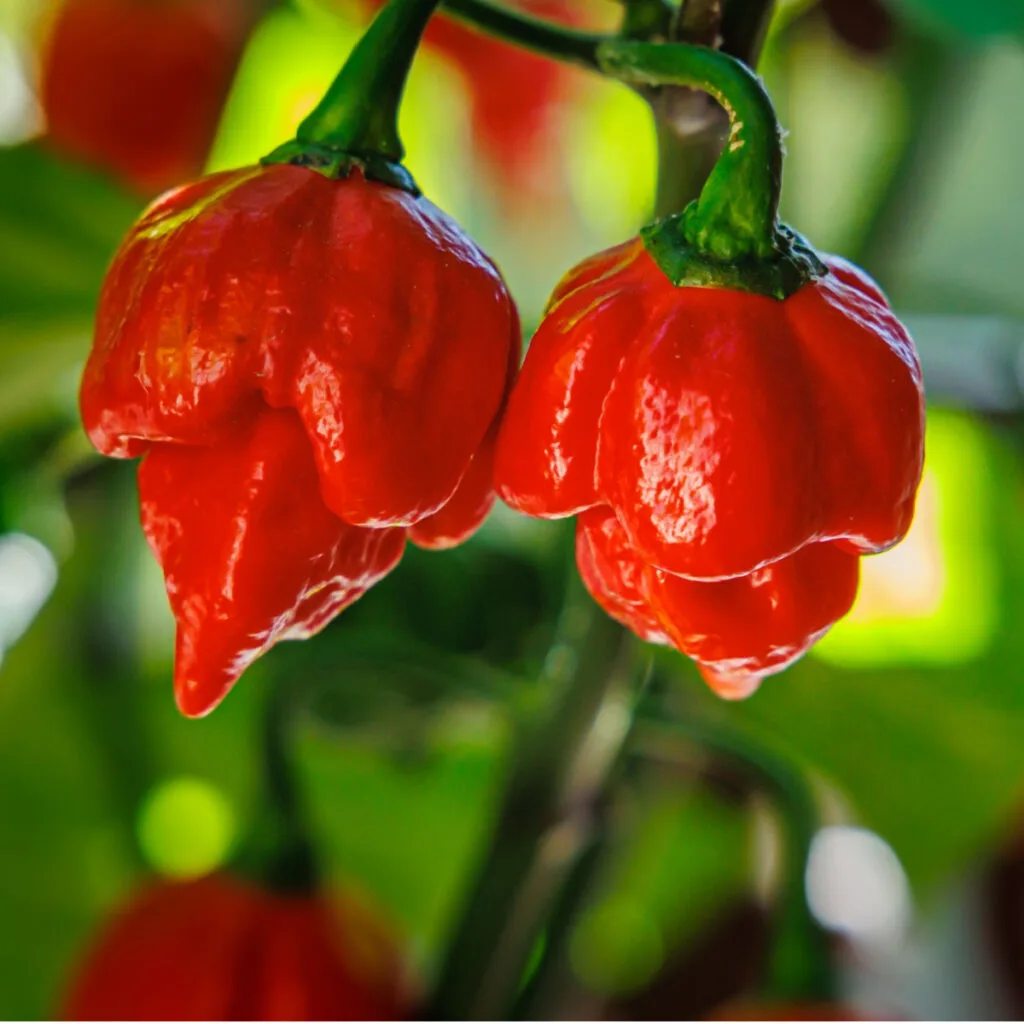
The good news is that growing hot peppers doesn’t require a lot of space or time, allowing you to grow them easily almost anywhere! As a general rule of thumb, the smaller stature of hot pepper plants allow them to be grown successfully in everything from a traditional garden, to raised beds or even containers on a back patio.
Even better, hot pepper plants are some of the most resilient vegetables you can grow. In fact, they are rarely bothered by pests, disease or drought. You can even use hot peppers to create a pest repelling spray to help protect other plants growing in your landscape!
How To Grow The Hottest Peppers Around
Without diving too deep into the science, hot peppers are rated for their heat by using the Scoville scale. It bases the heat on the amount of capsaicin in a pepper using Scoville units. There are thousands upon thousands of pepper varieties in the world. And they all take their place somewhere on the scale.
Green Bell and Sweet Bell peppers have a rating of 0. They have no heat whatsoever. A bit more up the scale would be a Poblano pepper at around a 1000. It goes up from there, with a Jalapeno coming in anywhere from 2500 to 8000 units, and a Serrano at 10,00 to 23,000 units on the Scoville chart.
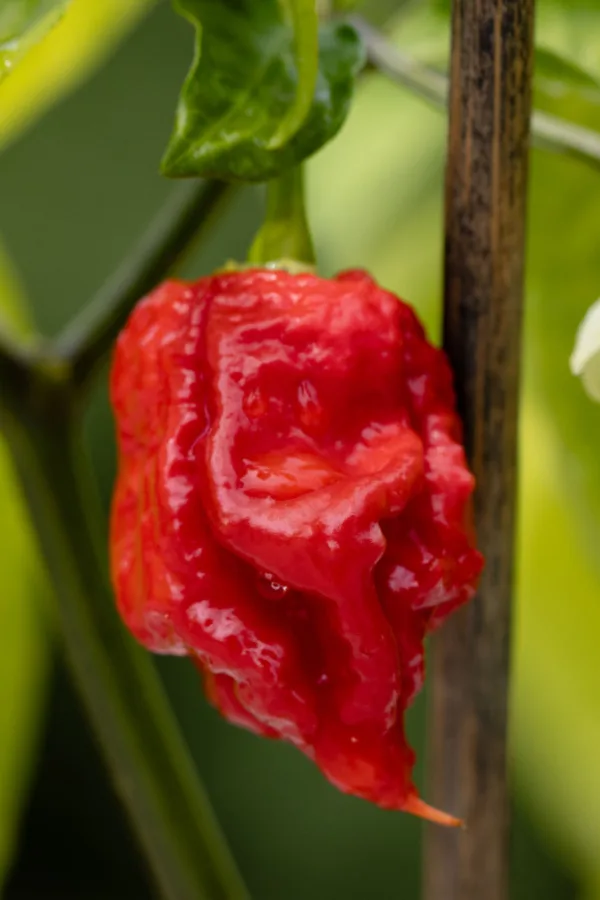
But to really get a hot pepper that can be loaded with heat – you need to get much hotter. As in 100,000 all the way up to 2.7 million units on the scale!
5 Peppers That Will Set Your Mouth On Fire!
It’s important to note one hot pepper you won’t find on the list below to grow is the newest developed pepper of all – Pepper X. Pepper X recently won the title of World’s Hottest Pepper.
It is the brainchild and was developed by Ed Currie, who also developed the world’s now 2nd hottest pepper on record, the Carolina Reaper. Pepper X comes in at an astonishing 2,693,000 Scoville units, far and above the Carolina Reaper. But its developer has decided not to sell the seeds, so for now, it remains out of the hand of growers.
But with that said, there are still some scorchers you can grow. With that in mind, here are 5 incredibly hot peppers to fill your garden with serious heat and flavor this year. We have included with each pepper an affiliate seed link as well.
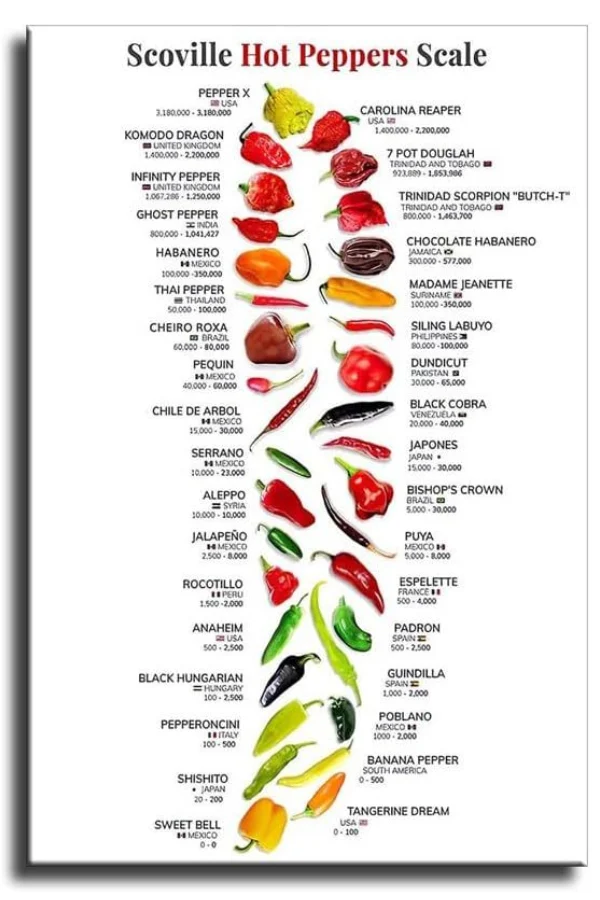
Carolina Reaper – How To Grow The Hottest Peppers
The Carolina Reaper originated in the Carolinas and for years held the world’s hottest pepper title. It has an average rating of just under 1.6 million Scoville units. It’s safe to say it will grow some tear-jerking hot peppers.
This pepper takes about 90-150 days to mature with hot pepper fruit. Most hot pepper seeds take a bit longer than standard vegetable seeds to germinate – because of that, it’s a great idea to get your seeds early and start seeds indoors a full 10 weeks before you will be planting outside. Affiliate Seed Link: Pepper Joe’s Carolina Reaper Seeds – Pack of 10
7 Pot Douglah – How To Grow The Hottest Peppers
Registering between 900,000 to 1.8 million Scoville units, the 7 Pot Douglah pepper packs a punch! Recognized by many to be the now 3rd hottest pepper in the world, the 7 Pot is seriously hot.
Like the Carolina Reaper, it can take a long time to germinate and develop. Start seeds indoors around 10 weeks prior to planting day and locate it in a bright sunny area where it can get loads of sunlight. Affiliate Product Link: Pepper Joe’s 7 Pot Pepper Seeds
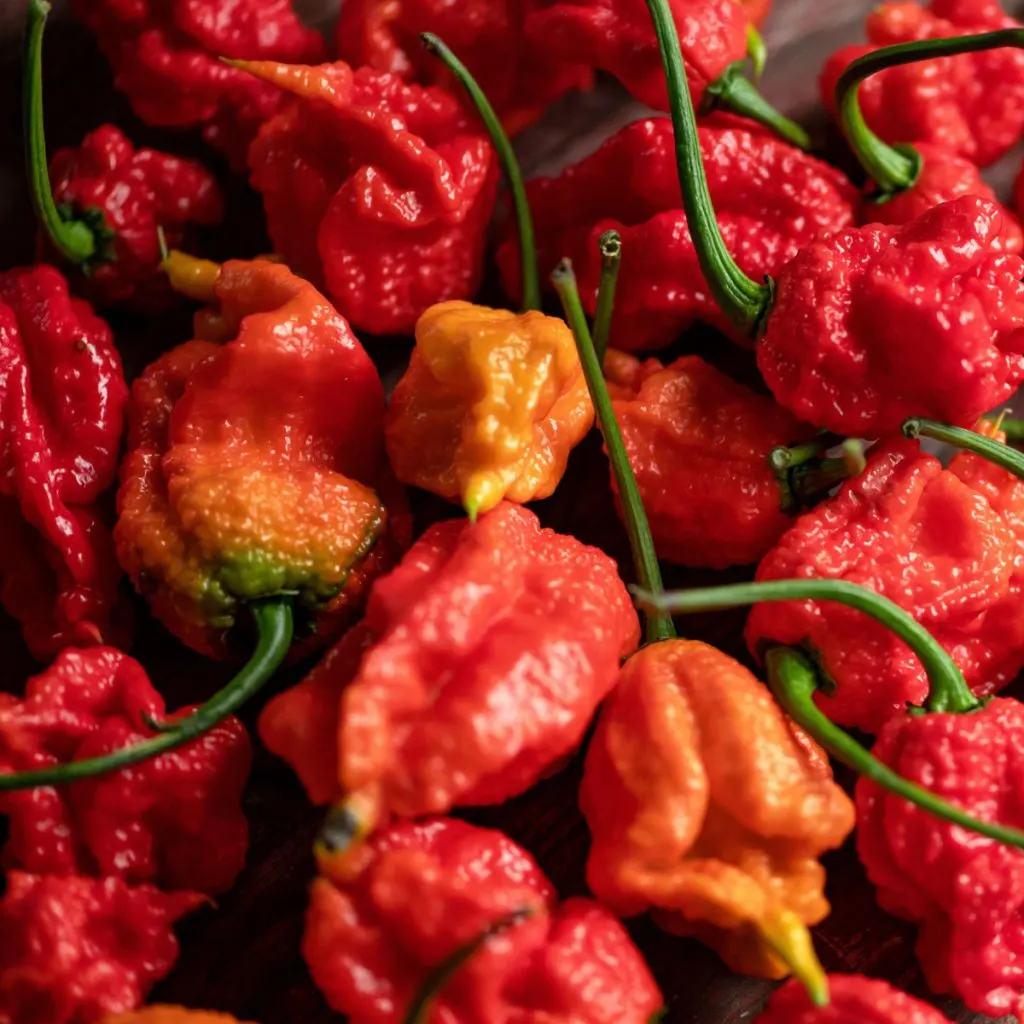
Trinidad Scorpion Pepper – How To Grow The Hottest Peppers
Another pepper that has origins in the Carolinas is the Trinidad Scorpion pepper – and it comes in at over 1.2 million Scoville units. For those that love this pepper, they will tell you brings some pretty intense flavor right along with the heat.
The Trinidad is a slow grower, taking about 100 to 120 days to go from seed to fruit. Just as with the other peppers on the list, starting seeds early indoors is the key to success! Pepper Joe’s Trinidad Scorpion Pepper Seeds
Ghost Pepper
The Ghost pepper is quite famous for being a fiery but flavor filled pepper. Many use it to make searing hot chili, while others dry it down into a pepper grind for putting on all kinds of foods. However and wherever you use it, it will bring the heat!
Ghost peppers can take anywhere from 14 to 21 days to germinate and will mature at 100 to 120 days. With this in mind, start seeds early indoors to give them a good head start. Affiliate Link: Ghost Pepper Seeds- 25+”Bhut Jolokia”

Chocolate Habanero – How To Grow The Hottest Peppers
Although this pepper has the lowest Scoville ranking on today’s list, that doesn’t mean it won’t set your mouth on fire! The Habanero is well-known as an intensely hot pepper, and this variety that matures to a brownish “chocolate” color is no exception.
This plant produces one to two inch fruits with plenty of heat. Maturing in 85 to 100 days, the fruits register around 100,000 to 200,000 for Scoville units. Affiliate Link: Chocolate Habanero Hot Pepper Seeds
Top Tips For Growing Hot Peppers – How To Grow The Hottest Peppers
When it comes to growing hot peppers successfully, it all starts with making sure your plants are located where they can get maximum sunlight. Peppers need sun to mature their crop – and a lot of it. Locate your peppers where they will get at least 8 hours of sunlight or more.
Just as with nearly all garden vegetables, peppers require well-draining, fertile soil to achieve maximum yields. Add plenty of compost to planting holes to help build soil strength and structure. See our article: The 3 Most Effective Ways To Use Compost In The Garden
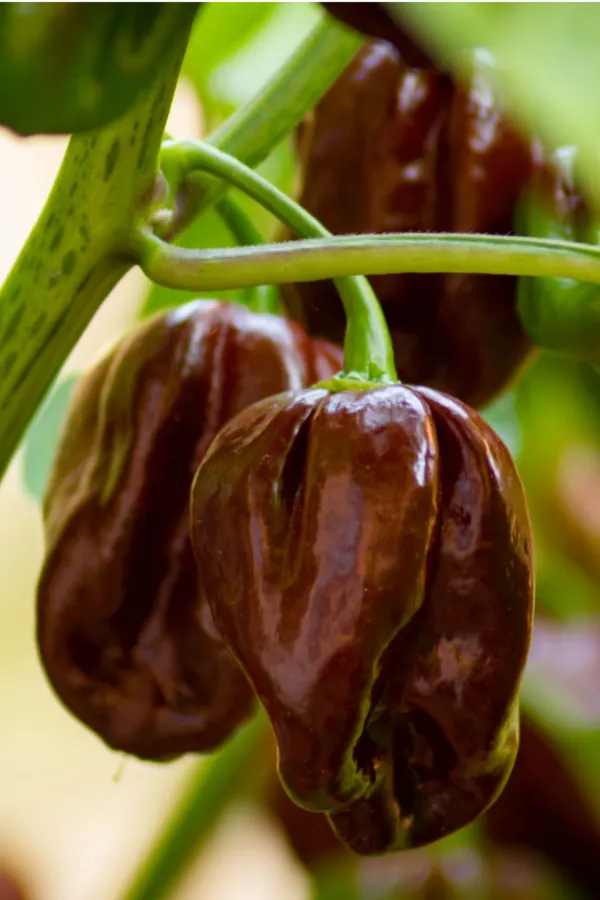
In addition, fertilize plants on a regular schedule to give them the nutrients they need consistently. When fertilizing, use an all purpose fertilizer that has a higher amount of phosphorous and potassium than nitrogen.
Nitrogen is important for growing, but the phosphorous and potassium will help increase yields and keep plants healthy and strong.
Don’t Forget The Water – How To Grow The Hottest Peppers
Although peppers are one of the most drought tolerant of vegetables in the garden, regular watering (on average, about 1/2 to 3/4 of a gallon of water per plant, per week) will help to increase yields dramatically.
Giving peppers a little support can go along way too. Stake or cage your plants early to help keep plants protected from heavy fruit loads. If they become too heavy, they can easily topple over and ruin the crop and the plant.
Finally, harvest your peppers regularly as they mature. When a plant becomes too overloaded with fruit, it will actually stop producing new flowers in order to concentrate on ripening what is on the plant. And when it does, it can cut yields considerably. Here is to growing some hot and spicy peppers in your garden space this year!
Follow Our Facebook Page For Great Gardening Tips And Advice! This Is My Garden Facebook Page
This Is My Garden is a garden website created by gardeners, for gardeners. Jim and Mary Competti have been writing gardening, DIY and recipe articles and books and speaking for over 15 years from their 46 acre Ohio farm. They publish three articles every week, 52 weeks a year. Sign up today to follow via email, or follow along!
